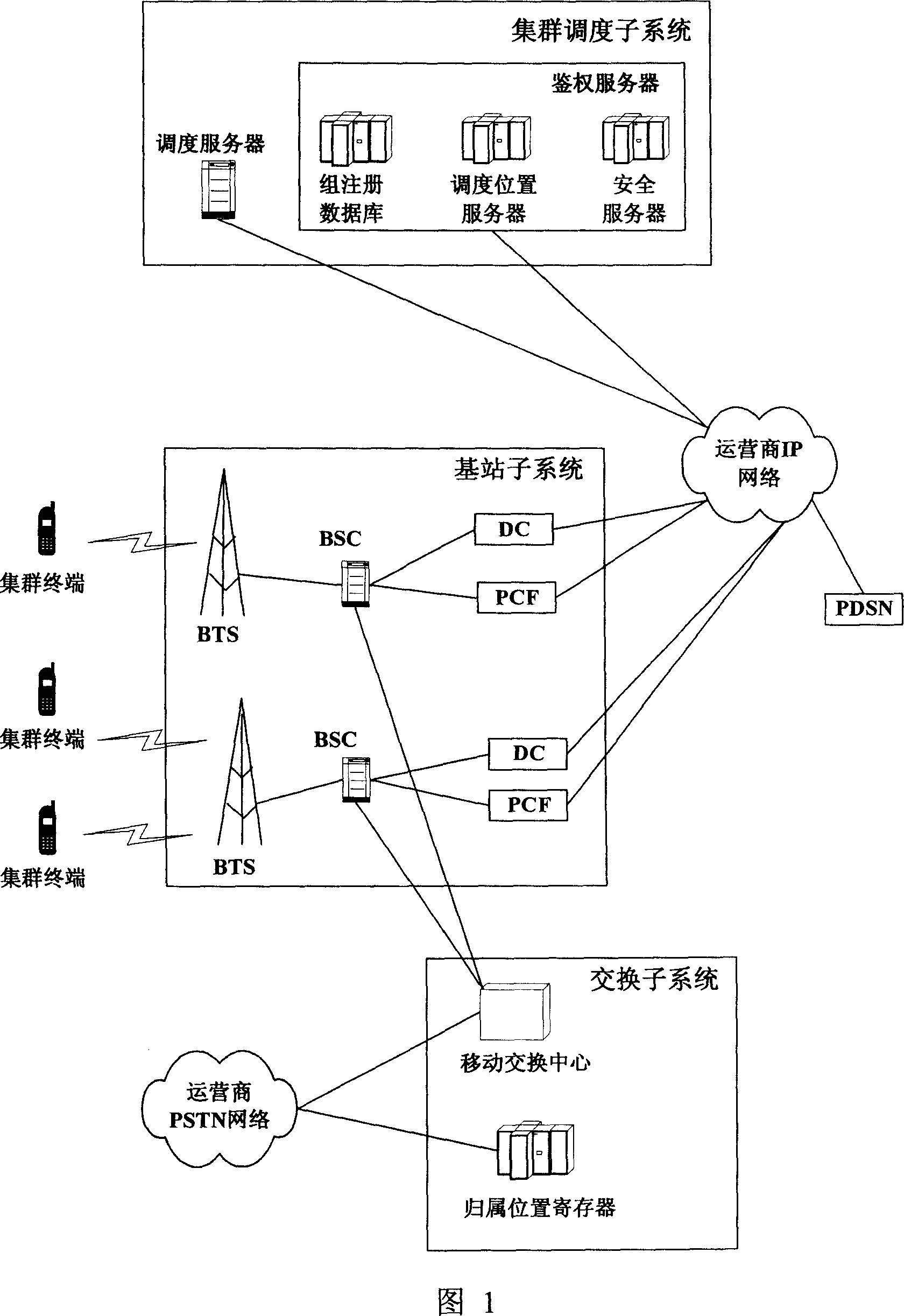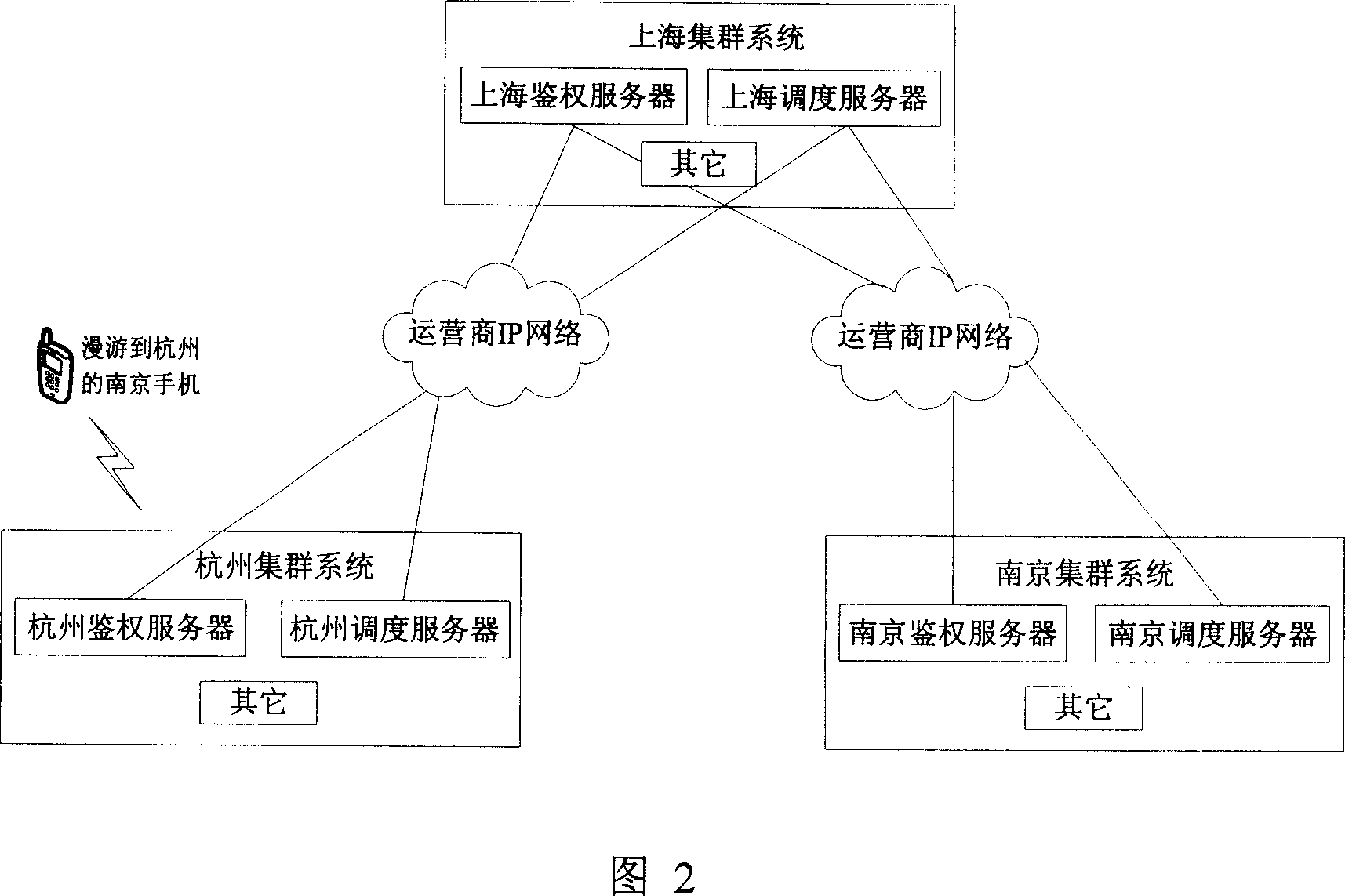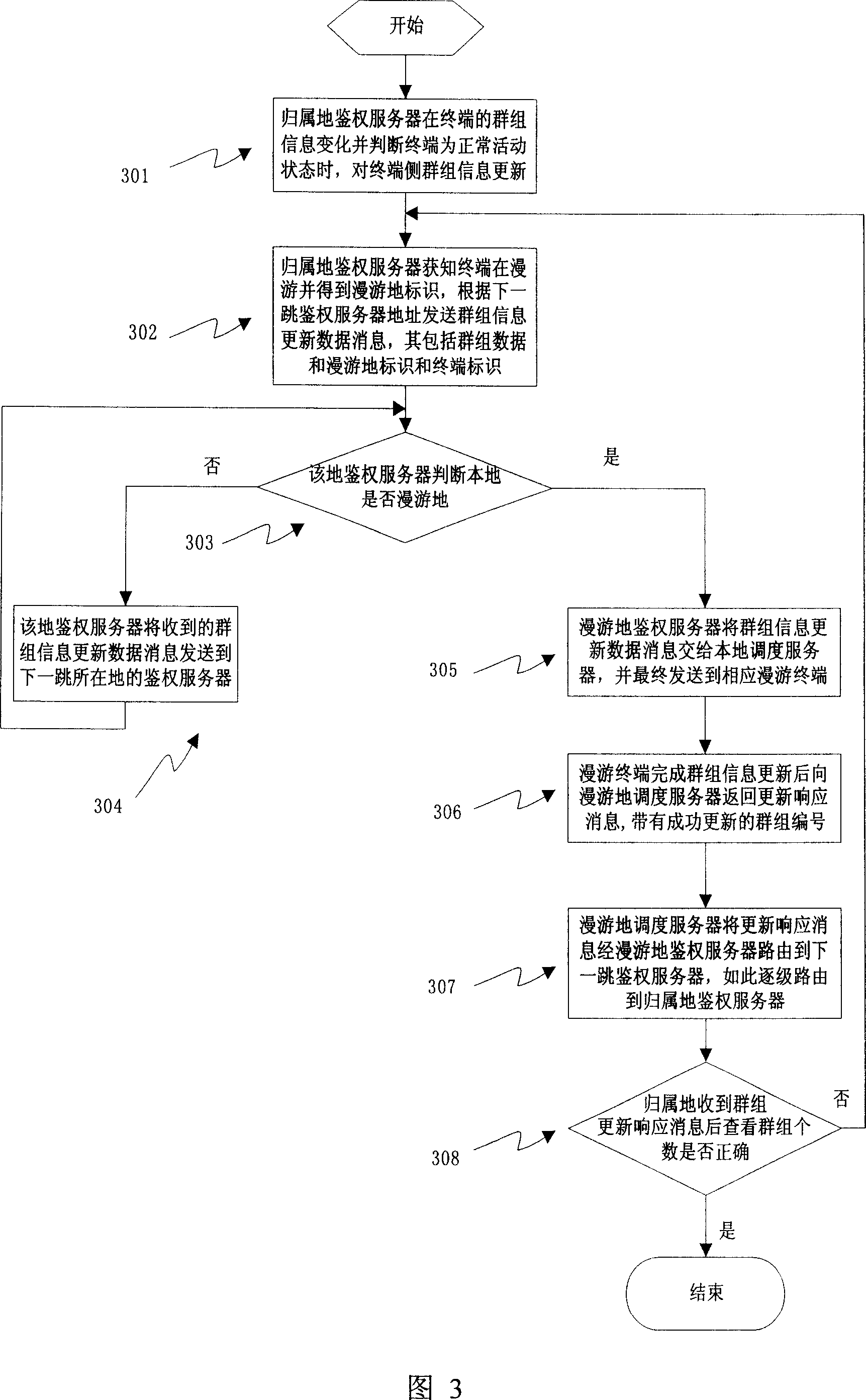Method for realizing roaming terminal group information updating for cluster system
A technology of group information and trunking system, applied in wireless communication, network data management, electrical components, etc., can solve the problem that terminals cannot be obtained immediately, affecting terminal trunking services, etc., and achieve the effect of ensuring timeliness and correctness
- Summary
- Abstract
- Description
- Claims
- Application Information
AI Technical Summary
Problems solved by technology
Method used
Image
Examples
no. 1 example
[0033] There may be many cluster systems in the whole network as shown in Figure 1. It is impossible to configure mutual trust relationship between any two cluster systems in the whole network and connect with the operator IP network. Yes, so generally speaking, a specific cluster system only configures a mutual trust relationship with several specific cluster systems. When a cluster system needs to communicate with other cluster systems, sometimes it needs to use the transit of multiple intermediate cluster systems.
[0034] In this embodiment, the group information update is initiated by the roaming terminal. In order to realize the routing function, a routing table needs to be configured in each authentication server. Specifically, the penultimate 8th to 5th digits of the IMSI can be used as the user attribution identifier string, each user affiliation identifier string corresponds to a next-hop identifier, and each next-hop identifier corresponds to one or more authenticati...
no. 2 example
[0071] In this embodiment, the group information update is initiated by the home authentication server. In order to realize the routing function, a routing table needs to be configured in each authentication server. The corresponding relationship between the address of the next-hop authentication server, the roaming location can be identified by the domain name and office number of the roaming location, and the home location can be identified by the IMSI attribution identifier string or the domain name and office number of the home location. The process of updating group information is described in detail below, including the following steps:
[0072] Step 301, the attribution authentication server initiates an update of the group information on the terminal side when the group information of the terminal changes and the terminal location information determines that the terminal is in a normal active state;
[0073] The attribution authentication server can initiate a synchron...
Embodiment
[0083] The embodiment ratio has the following characteristics:
[0084] 1) The update data of the group information is sent directly by the home authentication server in several messages, and the roaming scheduling server is only responsible for relaying, and finally the terminal returns a response.
[0085] 2) Because the number of interactions is small, the authentication server of this embodiment does not record the authentication server address of the previous hop and the next hop when receiving the message, but directly routes according to the attribution and roaming identifiers in the message, At this time, there is no need to delete the corresponding record at the end.
[0086] 3) When the authentication server sends a message, it does not add a local domain identifier to the message and does not judge whether it is cyclically forwarded or not. The problem of cyclically forwarded due to configuration can be solved in advance by other means.
[0087] Obviously, the meth...
PUM
 Login to View More
Login to View More Abstract
Description
Claims
Application Information
 Login to View More
Login to View More - R&D
- Intellectual Property
- Life Sciences
- Materials
- Tech Scout
- Unparalleled Data Quality
- Higher Quality Content
- 60% Fewer Hallucinations
Browse by: Latest US Patents, China's latest patents, Technical Efficacy Thesaurus, Application Domain, Technology Topic, Popular Technical Reports.
© 2025 PatSnap. All rights reserved.Legal|Privacy policy|Modern Slavery Act Transparency Statement|Sitemap|About US| Contact US: help@patsnap.com



